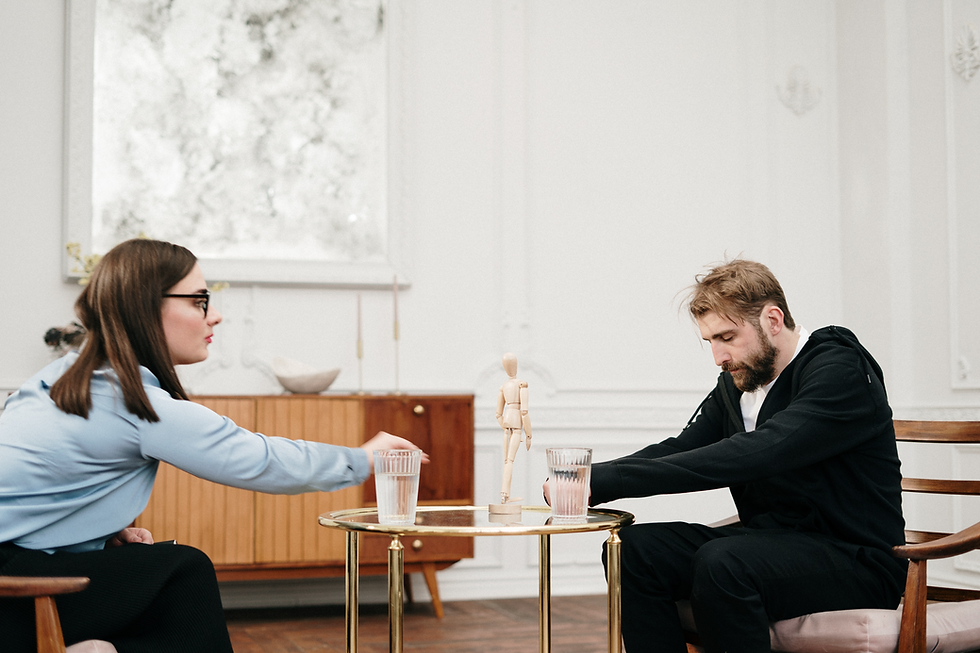Why Representation in Fashion is Important
- Hannah Rose

- Oct 12, 2021
- 4 min read

Fashion seems to surround us all the time, it places importance on how popular we are in what we wear, and acts as a means to express ourselves. It is clear that the fashion world has one ideal type of model. Typically this is; white, skinny and tall.
How much does that represent the majority of people and especially the young?
With brands like Fenty led by icon Rihanna, calling for more representation with people of different shades and sizing- ushering in a new age of models. How important is diversity and representation in the fashion world?
Fashion consumption
Fashion has always appeared in different forms to us; catwalk, red carpet, TV, online and even on the streets. Yet the media has always been pretty consistent in the types of models they hire to showcase their clothes.
Victoria's Secret being one of them who continuously showcase one body type and took until 2019 to show a plus-sized model on the runway. The brand clearly needs to work on having more representation. With stores like this in shopping centres globally it gains a lot of attention. The target audience is 16-24 who are seeing these images plastered that don’t look like their bodies, leading to a decline in self-esteem and a rise in mental health issues like anorexia and body dysmorphia.
Body dysmorphia is when a person spends a lot of time worrying about flaws in their appearance. These flaws are what the person sees themselves, and leads to a very distorting view of oneself. I’m not saying this is only caused by the fashion industry, but the lack of representation in fashion does make people feel different and bad about themselves. If they don’t feel represented, they think there must be something wrong with them.
Brands needing rebranding
It is important to supply young audiences with as much representation to show that there isn’t one ideal body type. People’s bodies are so different yet uniquely beautiful. This has to come from the big brands, the audience are the ones who will wear most of the products- so why wouldn’t they want to see it on as many different body types?
How do brands showcase this diversity? The right response by many is to hire and work with creatives from different backgrounds and take on board more ideas. Yet in recent years brands such as; Marc Jacobs, Gucci and Vogue have come under fire for cultural appropriation. Using famous people to showcase the looks as their own, instead of appreciation it is appropriation.
"Things like fear, stigma and lack of culturally sensitive treatment can act as barriers to accessing mental health care for people from BAME background" Rethink.org
People from BAME backgrounds aren’t being represented enough in the world of fashion but also in any means. People from BAME backgrounds suffering from mental health issues risk not being taken as seriously. Mental health is often glamourised in the media and rarely represents people of colour as those suffering.
Social media
"Depressive symptoms amongst 'Generation Z' are around two-thirds higher than the 'millennial generation' born in the early nineties" Alex Matthews-King
Social media has always been a catalyst for trends. As the younger generation is using social media more now than before. Is it helping to break down stigma or feeding into people’s insecurities?
Instagram is notorious for building influencers and promoting products like waist trainers and skinny tea, encouraging people to mould their bodies in a ‘more desirable way’. This feeds into people’s low self-esteem and can have dangerous consequences. With 1 in 4 people experiencing a mental health problem in the UK, something has to change. Companies need to stop paying influencers to promote these products and instead look at the damaging effect. Influencers need to look at what sort of message they want to portray onto the audience, readjust rather than profiting.
Beauty of inclusivity
There is an array of LGBT+ and plus-sized influencers that aim to educate, remove stigma and showcase different people, using social media as their platform to spread messages. This is a step in the right direction. Hopefully with time their followings would grow more. Allowing them to reach more people at the same rate as the average influencer.
It is important for LGBT+, BAME, disabled and plus-sized people to see themselves represented more in media. Knowing that there are others who welcome and accept them, when they may not feel that themselves. Social media provides a way of connection globally, with people feeling less alone in their struggles.
With more influencers doing this it opens up a door for people to be more honest and raw, it adds more personality to people behind the scenes. This is evident in new social platform TikTok with creators participating in trends showing unedited images of themselves and in different clothing trends. Welcoming different body types and speaking out about mental health to remove stigma. This is all a step in the right direction. If we as consumers can’t completely remove the fashion stereotype of one size fits all, then at least we can make our own platform to provide support for people who feel there isn’t any.



Comments